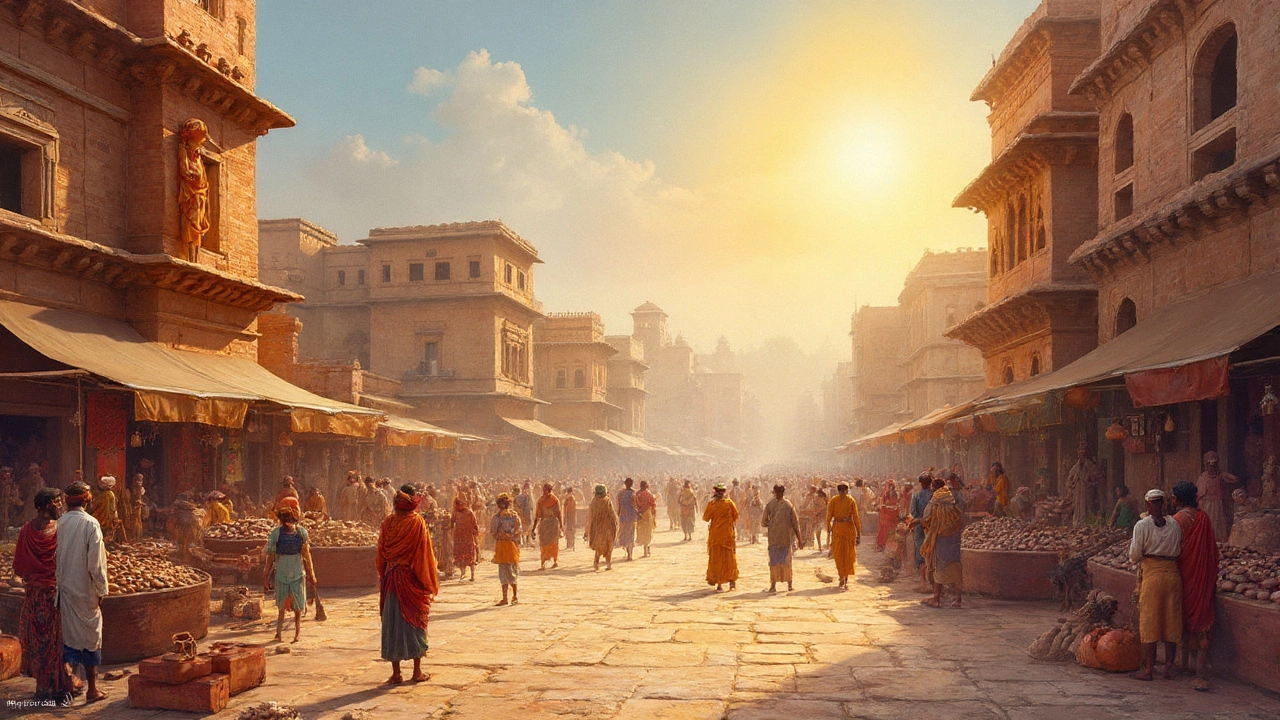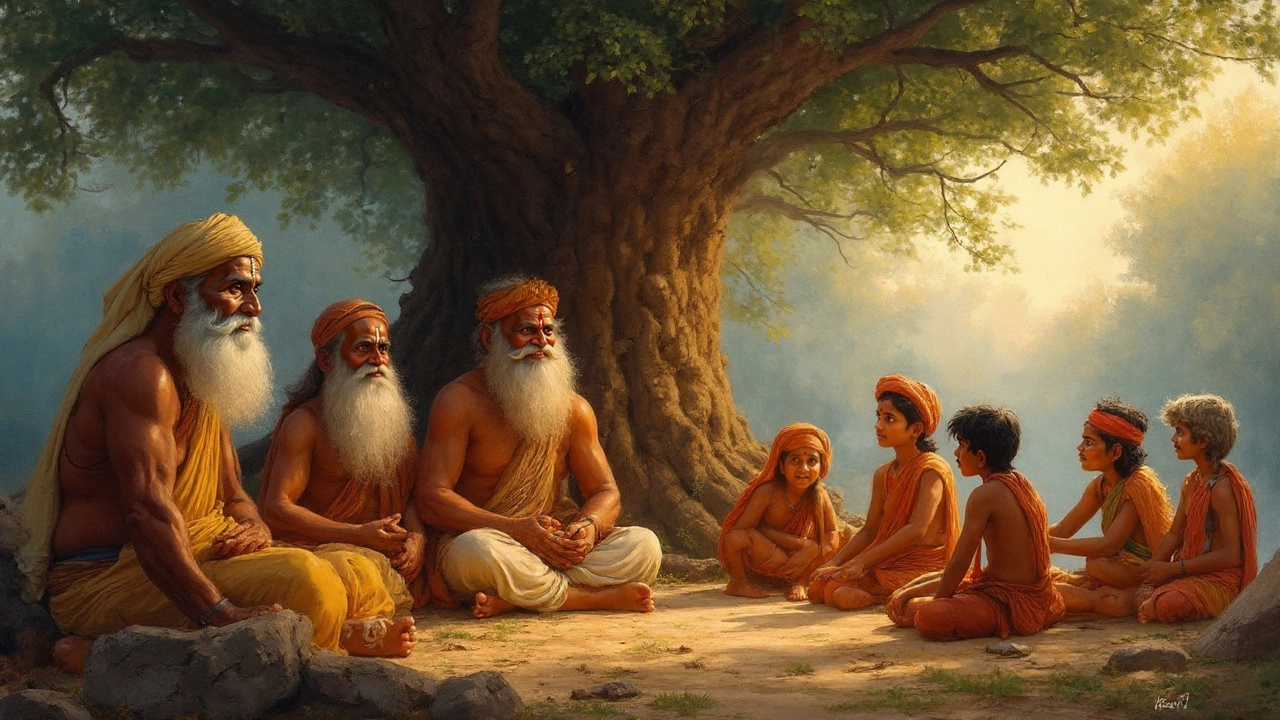Is India the World’s Oldest Living Culture? Tracing Ancient Roots & Timeless Traditions

- Aug, 3 2025
- 0 Comments
- Aaron Blackwood
Stop me if you’ve heard this one: the only constant about India is that everything is ancient. But is India really the oldest culture in the world, or is that just something people like to say? When the land brims with 5,000-year-old ruins, Vedic chants that predate the English language, and millions of people living out traditions their ancestors started, it’s easy to believe. But then you hear about Mesopotamia, Ancient Egypt, or the Aboriginal Australians, and you start to wonder who truly holds the title of the world’s oldest culture. Let’s get right into this tangled but totally fascinating web.
Peeling Back Time: India’s Claim to Ancientness
India’s knack for surviving the centuries isn’t just about age—it’s about memory. When you step onto a street in Varanasi or Madurai, you can watch rituals and ways of life passed down, sometimes unchanged, for thousands of years. The Indus Valley Civilization, usually dated to about 3300–1300 BCE, comes up every time India’s ancient status is debated. Found near today’s Pakistani border and around northwest India, places like Mohenjo-daro and Harappa woo archaeologists with advanced city planning, drainage, and those cool little steatite seals. That age rivals places like Sumer or Egypt, sure. But what’s wild is not just that these ruins are old—it’s that they’re tangled up in what came after, linking right into Vedic culture, languages, and folkways that show up in India’s living traditions.
If you follow the thread through the Vedas, which are said to originate sometime around 1500 BCE (maybe earlier), you run into hymns and cosmologies that still shape daily Indian rituals. Sanskrit’s roots dig deep, influencing almost every Indian language today. Even the word ‘India’ comes from the Sindhu (Indus) river, showing just how old the naming itself is. But here’s the kicker: much of this culture isn’t just frozen for museum glass. Traditional knowledge—Ayurveda, Yoga, Vastu for architecture—gets practiced by millions. You can meet someone pressing oil with ancient methods, cooking with stone grinders, or performing a fire ritual whose script they read from palm-leaf manuscripts. In some cases, lineages of priests or families can trace their involvement back twenty, thirty, or forty generations.
But is longevity alone the mark of the oldest culture? Or does it come down to how much of that past sticks around? Some scholars love to point out that unlike places where only stones or fragments tell the tale, India’s oral traditions kept vast stories, epics, and philosophies alive through huge time stretches. The Mahabharata—the world’s longest poem—reads like a living record, and people still recite it publicly. Archaeological dig after dig, from Mehrgarh in Balochistan (stretching as far back as 7000 BCE), to the ancient temples of Tamil Nadu, gives more support to the idea that some Indian practices are staggeringly old. By some counts, Hinduism itself might be the last living ancient religion that’s still rooted in texts and customs that predate pretty much everything else you see today.
Comparisons: India vs. Other Ancient Cultures
Here’s where things get a bit spicy—India’s not the only place with impressive ancient street cred. Mesopotamia, wedged between the Tigris and Euphrates, boasts the cradle of the world’s first urban civilizations, often starting around 3500 BCE. Ancient Egypt’s religious practice, monumental architecture, and writing system color our collective imagination, too, with a record that goes back about as far. And then there’s the Chinese civilization, running like a freight train through millennia with barely a pause.
The oldest Aboriginal Australian cultures, though, might be even older—some researchers have evidence of continuous habitation and cultural transmission for nearly 60,000 years. The traditions of Australian Aboriginals are, by some scientific accounts, the oldest uninterrupted cultures on the planet. But—and it’s a big but—much of what survives is oral tradition and custodianship of land, not urban civilization with monumental artifacts, written records, or continuity of organized religion like what you see in India.
What really sets India apart isn’t just age. It’s that you can see so many layers of ancient culture piled atop each other, still breathing as part of everyday life. You might step out of a glass-and-steel office in Bangalore and into a centuries-old temple where priests chant mantras just as described in ancient texts. The language of those mantras? Old enough to make Latin seem modern. Written traditions might start in 1400 BCE, but in India, the oral tradition rules, and people memorize entire epics—no small feat when the Mahabharata alone is eight times longer than The Odyssey and The Iliad combined. This strong, continuous thread in living memory and society keeps Indian culture feeling ancient yet entirely modern at the same time.
When comparing with places like Egypt or Sumer, you’ll notice their ancient scripts and religions have faded. Egypt’s pharaohs and priests are gone; Sumer’s cuneiform is silent except on clay tablets. But in India, the Vedas still get chanted. Many temples remain active pilgrimage sites, and agricultural routines echo ancient methods. If you want to walk into a culture where ancient ways aren’t relics but daily realities, India is hard to beat.

Continuity and Change: How Old Traditions Survive
You can hardly blame people for calling India a living fossil—except things here never really fossilized. Traditions mutate, mix, and sometimes do a total U-turn, but the past is never far behind. India’s “oldest culture” argument isn’t about being static; it’s about being adaptable without dropping the ball on roots. Want a real-life example? Watch Indian weddings. Nowhere else on earth will you see such a crazy mash-up—sacred fire, ancient Vedic mantras, then a DJ spinning Bollywood remixes. The fire ritual? Barely changed since before iron was discovered by the ancestors.
The secret to this stubborn continuity is, weirdly enough, all about letting things shift just enough to survive whatever history throws at you. The Mughal era painted over Hindu architecture with Persian influences but never wiped out the basics. Later, the British Raj handed India cricket and English, but Sanskrit chants and Diwali lamps kept glowing. Even modern pop culture borrows symbolism and storylines from the Mahabharata and Ramayana, India’s ancient epics, and billion-dollar film franchises ride on those old tales.
It’s not all rosy. Colonization, partition, modernization—all these tore up many old ways. But traditions like Ayurveda, yoga, handloom weaving, and grassroots crafts still chug along. Visit Kerala and you’ll find people mixing herbal remedies just as their ancestors did; go to Benaras and see rituals for the river Ganga that have barely changed for centuries. Most Indian villages still have elders who know oral genealogies, mantras, and farming cycles that echo the Vedic calendar.
Continuity gets another boost from India’s diversity. Because there was never just one monolithic “Indian culture,” parts of the puzzle survived even if others faded in a region. Tamil, Kannada, Telugu, and Malayalam are four Southern languages derived from a completely different source than Sanskrit but have equally old roots. Ancient Jain and Buddhist practices rub shoulders with Vedic fire altars and tribal animist festivals. This patchwork means that when one custom is threatened, another often keeps the flame burning. That’s how you get a “living ancient culture”—the kind you can literally step into, taste, see, and join in, even if you’re just visiting.
Tips for Experiencing Ancient India—Today
So you’re sold on the fact that Indian culture is ancient—and you want to experience the oldest threads for yourself. Awesome. Here’s what you can do to actually feel that history instead of just snapping selfies at old stuff:
- oldest culture India comes alive in Varanasi—catch the evening Ganga aarti, watch priests perform age-old fire rituals, and chat with locals about the myths as old as time.
- Visit Hampi or Khajuraho for stone-carved monuments that connect you directly to the soul of classical India—far from the crowds of the Taj Mahal.
- Drop into rural festivals—India’s deep ancientness survives best in villages. From the Nāga land’s Hornbill Festival to Kerala’s Onam, the rituals are the real deal.
- If you’re in Tamil Nadu, journey to the Madurai Meenakshi temple—part of a religious tradition that’s seen thousands of years pass by and kept going strong.
- Dive into folk performances like Chhau in Odisha or Kathakali in Kerala to see how epic myths and sacred stories come alive through dance and mask.
- Don’t just watch—participate. Try a yoga session with a lineage-holder, or help prepare a South Indian temple prasadam meal, cooked to centuries-old rules.
- Pick up a translated copy of the Rig Veda or the Upanishads to see how ancient ideas still shape questions about life, death, love, and meaning.
- Explore living crafts—learn about natural dyes, hand-block printing, or terracotta pottery. These are artisan skills passed along unbroken since the days cities were just brick mounds beside the Indus.
- Find an expert guide. History here hasn’t always been written down, so local wisdom is golden. Talk to priests, scholars, or just the oldest chai vendor—it’s all part of living heritage.
So, is India the world’s oldest culture? The answer depends on what you think counts most: continuous tradition, monumental ruins, or the sheer act of keeping ancient memories alive despite endless waves of change. India might not be the only contender for oldest, but if you want to live among the ruins and rituals—and not just look at them—there’s really no other place quite like it.